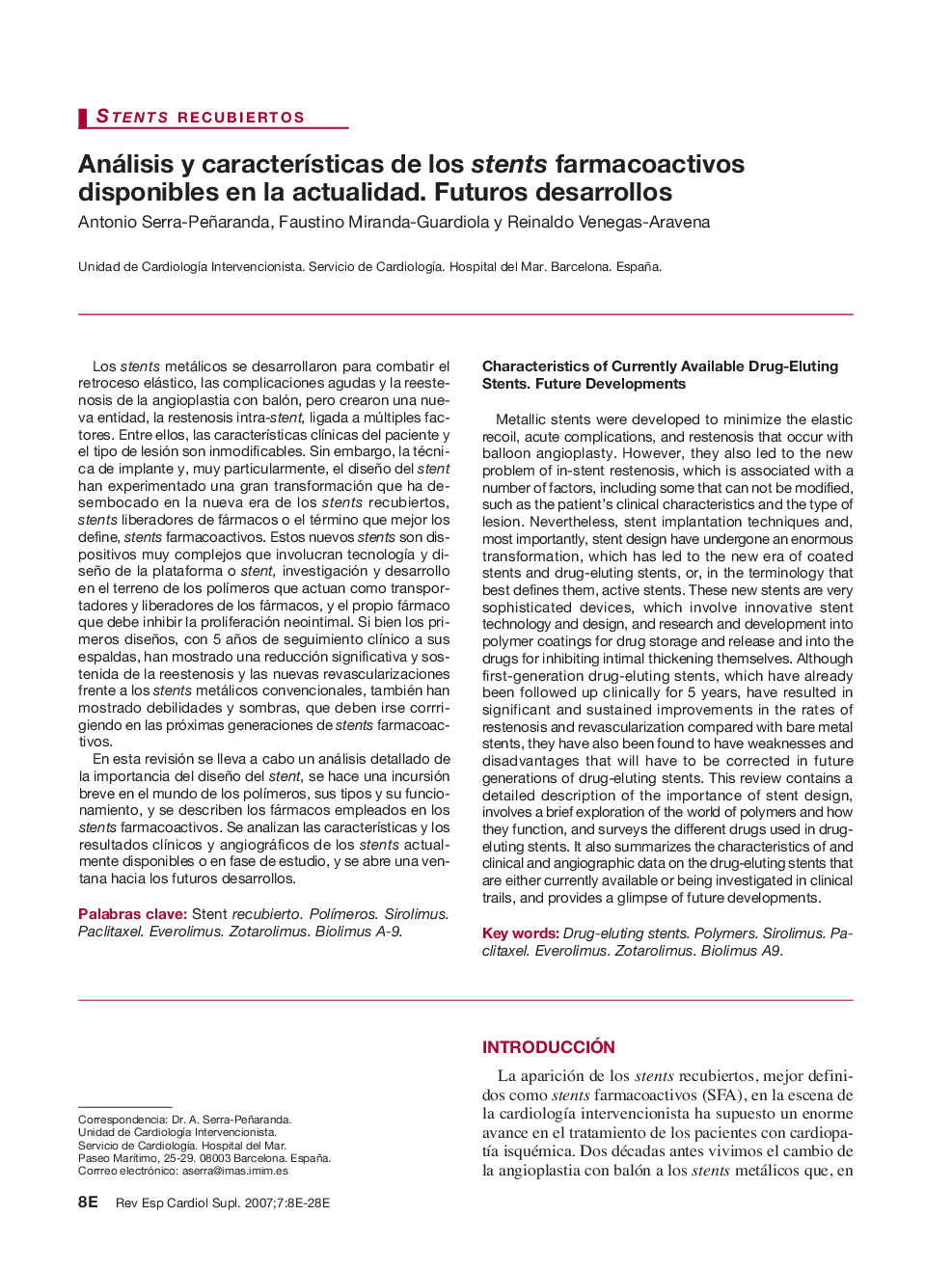| Article ID | Journal | Published Year | Pages | File Type |
|---|---|---|---|---|
| 3019672 | Revista Española de Cardiología Suplementos | 2007 | 21 Pages |
Abstract
Metallic stents were developed to minimize the elastic recoil, acute complications, and restenosis that occur with balloon angioplasty. However, they also led to the new problem of in-stent restenosis, which is associated with a number of factors, including some that can not be modified, such as the patient's clinical characteristics and the type of lesion. Nevertheless, stent implantation techniques and, most importantly, stent design have undergone an enormous transformation, which has led to the new era of coated stents and drug-eluting stents, or, in the terminology that best defines them, active stents. These new stents are very sophisticated devices, which involve innovative stent technology and design, and research and development into polymer coatings for drug storage and release and into the drugs for inhibiting intimal thickening themselves. Although first-generation drug-eluting stents, which have already been followed up clinically for 5 years, have resulted in significant and sustained improvements in the rates of restenosis and revascularization compared with bare metal stents, they have also been found to have weaknesses and disadvantages that will have to be corrected in future generations of drug-eluting stents. This review contains a detailed description of the importance of stent design, involves a brief exploration of the world of polymers and how they function, and surveys the different drugs used in drugeluting stents. It also summarizes the characteristics of and clinical and angiographic data on the drug-eluting stents that are either currently available or being investigated in clinical trails, and provides a glimpse of future developments.
Keywords
Related Topics
Health Sciences
Medicine and Dentistry
Cardiology and Cardiovascular Medicine
Authors
Antonio Serra-Peñaranda, Faustino Miranda-Guardiola, Reinaldo Venegas-Aravena,
